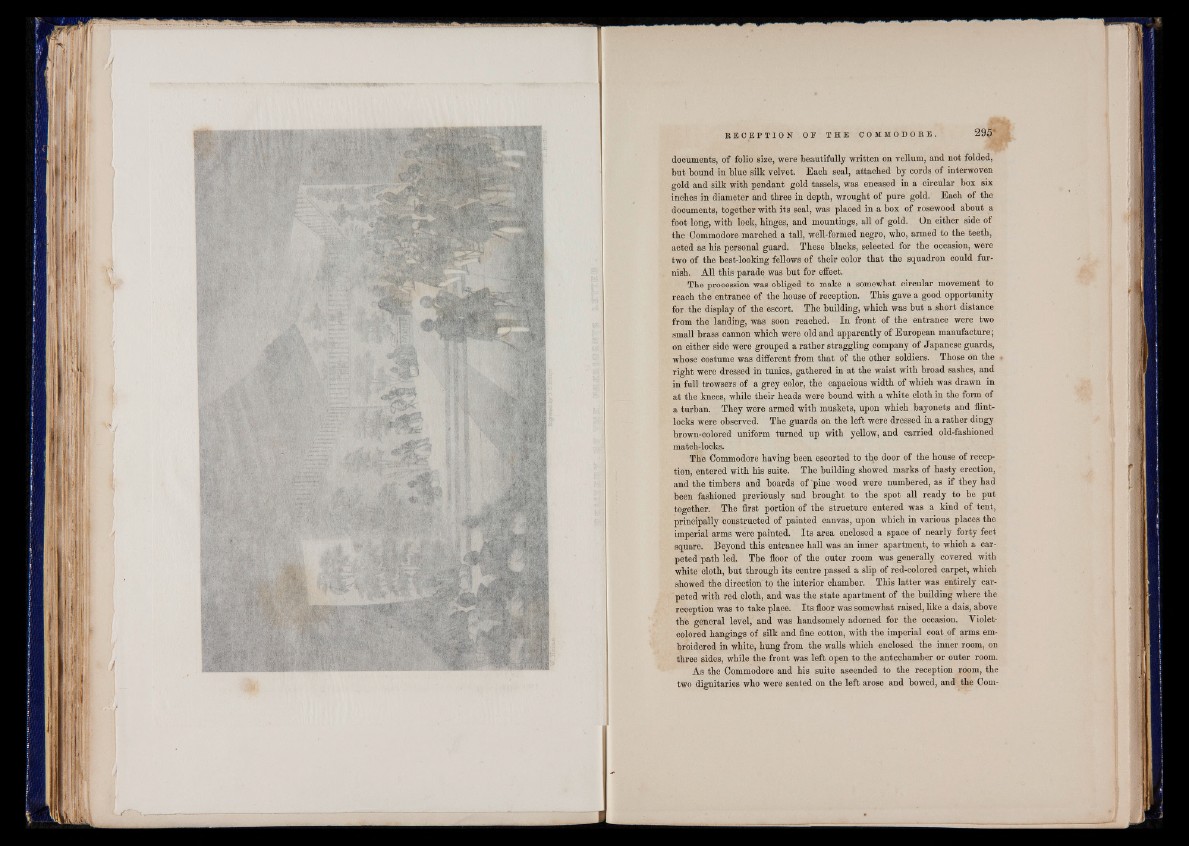
documents, of folio size, were beautifully written on vellum, and not folded,
but bound in blue silk velvet. Each seal, attached by cords of interwoven
gold and silk with pendant gold tassels, was encased in a circular box six
inches in diameter and three in depth, wrought of pure gold. Each of the
documents, together with its seal, was placed in a box of rosewood about a
foot long, with lock, hinges, and mountings, all of gold. On either side of
the Commodore marched a tall, well-formed negro, who, armed to the teeth,
acted as his personal guard. These blacks, selected for the occasion, were
two of the best-looking fellows of their color that the squadron could furnish.
All this parade was but for effect.
The procession was obliged to make a somewhat circular movement to
reach the entrance of the house of reception. This gave a good opportunity
for the display of the escort. The building, which was but a short distance
from the landing, was soon reached. In front of the entrance were two
small brass cannon which were old and apparently of European manufacture;
on either side were grouped a rather straggling company of Japanese guards,
whose costume was different from that of the other soldiers. Those on the «
right were dressed in tunics, gathered in at the waist with broad sashes, and
in full trowsers of a grey color, the capacious width of which was drawn in
at the knees, while their heads were bound with a white cloth in the form of
a turban. They were armed with muskets, upon which bayonets and flintlocks
were observed. The guards on the left were dressed in a rather dingy
brown-colored uniform turned up with yellow, and carried old-fashioned
match-loeks.
The Commodore having been escorted to the door of the house of reception,
entered with his suite. The building showed marks of hasty erection,
and the timbers and boards of pine wood were numbered, as if they had
been fashioned previously and brought to the spot all ready to be put
together. The first portion of the structure entered was a kind of tent,
principally constructed of painted canvas, upon which in various places the
imperial arms were painted. Its area enclosed a space of nearly forty feet
square. Beyond this entrance hall was an inner apartment, to which a carpeted
path led. The floor of the outer room was generally covered with
white cloth, but through its centre passed a slip of red-colored carpet, which
showed the direction to the interior chamber. This latter was entirely carpeted
with red cloth, and was the state apartment of the building where the
reception was to take place. Its floor was somewhat raised, like a dais, above
the general level, and was handsomely adorned for the occasion. Violet-
colored hangings of silk and fine cotton, with the imperial coat of arms embroidered
in white, hung from the walls which enclosed the inner room, on
three sides, while the front was left open to the antechamber or outer room.
As the Commodore and his suite ascended to the reception room, the
two dignitaries who were seated on the left arose and bowed, and the Com